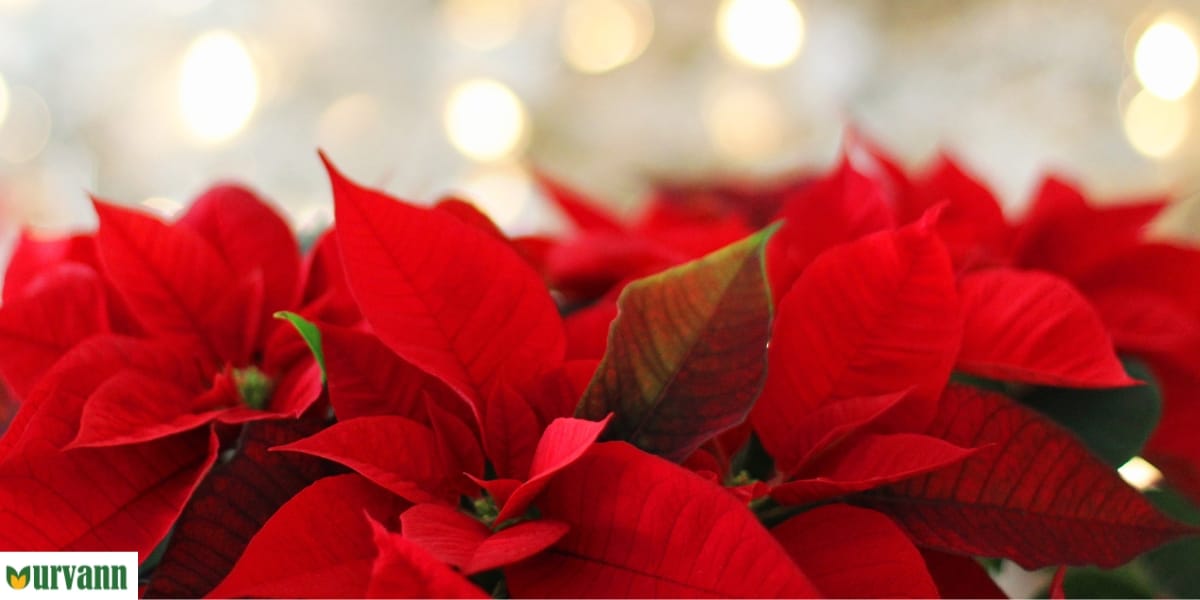The Poinsettia is a festive favourite, instantly recognizable for its vibrant red, white, or pink leaves. Known as the "Christmas plant," Poinsettias are more than just a seasonal decoration; with the right care, they can be an elegant and lasting addition to your home. In this blog, we’ll dive into the origins of the Poinsettia and how to care for it, which will help you appreciate this beautiful plant even more.
A Brief History of Poinsettia
The Poinsettia has a fascinating history that stretches back centuries. It is native to Mexico, where the plant naturally grows as a shrub.
Joel Roberts Poinsett introduced the plant to the United States in 1828. He was an amateur botanist and became so captivated by the plant’s bright red leaves that he sent cuttings back to his home in South Carolina. The plant was later named "Poinsettia" in his honour.
Why Do Poinsettias Turn Red?
One of the most intriguing features of the Poinsettia is its vibrant red colour. But did you know that the red “flowers” are not flowers? They are specialized leaves called bracts. The actual flowers of the Poinsettia are the small yellow structures at the centre of the bracts, known as cyathia.
Poinsettias require a period of darkness for the bracts to turn red (or pink, white, or variegated). Poinsettias are photoperiodic plants, meaning their colouring is affected by the length of daylight. To achieve those brilliant colours, Poinsettias need about 12-14 hours of complete darkness every day for at least five weeks before they can “blush” into their signature hue. This natural cycle coincides with winter, so they are most popular around Christmas.
How to Care for Your Poinsettia
Though commonly considered a plant that only lasts through the holidays, Poinsettias can thrive year-round with proper care. Here’s how to keep your Poinsettia looking fresh and vibrant long after Christmas has passed:
1. Light
Poinsettias love bright, indirect light. Place them near a sunny window, but don’t expose them to direct sunlight for too long, as this can cause their leaves to scorch. If the plant starts to look slightly leggy or its bracts begin to fade, it may not get enough light.
2. Watering
One of the most common mistakes with Poinsettia care is improper watering. These plants prefer to stay consistently moist but not soggy. The best way to water your Poinsettia is to allow the top inch of soil to dry out between waterings. Drain any excess water from the pot to avoid root rot when watering.
3. Temperature and Humidity
Poinsettias thrive in temperatures between 15°C to 21°C. They don’t do well in sudden temperature changes, so keep them away from doors, windows, and heating vents. These plants also appreciate humidity, so if the air in your home is dry, consider misting them lightly or placing a humidifier nearby.
4. Fertilizing
After the blooming season, you can continue to feed your Poinsettia to keep it healthy. Use a balanced, all-purpose houseplant fertilizer once a month, but avoid fertilizing while the plant is in bloom. Fertilization is more important during the growing season, which typically starts in spring.
5. Pruning and Repotting
Once the bracts begin to fade, you can prune your Poinsettia back to about 4-6 inches in height. This encourages new growth and keeps the plant bushy. In spring or early summer, you may need to repot your Poinsettia to provide fresh soil and give its roots more room to grow. Choose a pot that’s only slightly larger than the current one and ensure good drainage.
Common Problems with Poinsettias
Even with the best care, Poinsettias can sometimes run into trouble. Here are a few common issues and how to address them:
-
Yellowing Leaves
This usually indicates overwatering. Reduce your watering frequency and ensure the soil is well-drained. -
Leaf Drop
Poinsettias can lose their leaves if exposed to sudden temperature changes, too much or too little water, or low light. Keep the plant in a stable environment and check your care routine. -
Pests
Like many houseplants, poinsettias are prone to pests like aphids and whiteflies. If you notice these invaders, wash the leaves with soapy water or use insecticidal soap to remove them.
Conclusion
The Poinsettia is a vibrant and festive plant that can bring warmth and color to your home during the holiday season and beyond. With proper care, you can enjoy its beauty year-round, and even coax it to bloom again next winter. Whether you appreciate it for its striking appearance or its rich history, the Poinsettia is truly a special addition to any home.
So the next time you see a Poinsettia, remember there’s more to this plant than meets the eye—beneath those vibrant bracts is a plant with a fascinating past and a future that can be as bright as its colors!


